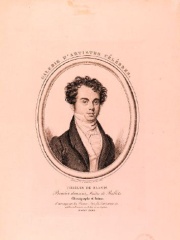
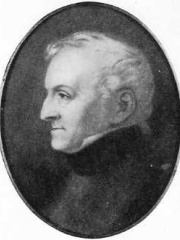
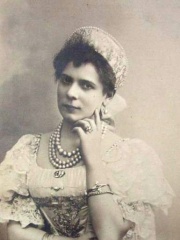
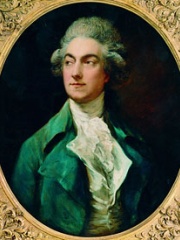
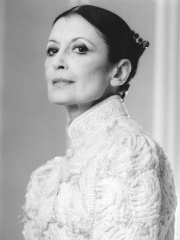
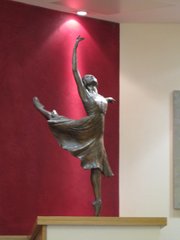
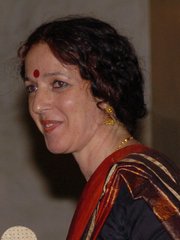
The Most Famous
DANCERS from Italy
Top 8
The following people are considered by Pantheon to be the most legendary Italian Dancers of all time. This list of famous Italian Dancers is sorted by HPI (Historical Popularity Index), a metric that aggregates information on a biography's online popularity.

1. Carlo Blasis (1797 - 1878)
With an HPI of 65.81, Carlo Blasis is the most famous Italian Dancer. His biography has been translated into 35 different languages on wikipedia.
Carlo Blasis (Italian pronunciation: [ˈkarlo ˈblaːzis]; 4 November 1797 – 15 January 1878) was an Italian dancer, choreographer and dance theoretician born in Naples. He is well known for his very rigorous dance classes, sometimes lasting four hours long. He danced in France, Italy, London and Russia. Blasis insisted that his students learn theories and definitions of dance steps. He trained all of Enrico Cecchetti's teachers and it is thought that Blasis's influence in his training is what led Cecchetti to create the Cecchetti method of ballet.

2. Filippo Taglioni (1777 - 1871)
With an HPI of 63.37, Filippo Taglioni is the 2nd most famous Italian Dancer. His biography has been translated into 22 different languages.
Filippo Taglioni (also known as Philippe Taglioni; 5 November 1777 – 11 February 1871) was an Italian dancer and choreographer and personal teacher to his own daughter, Romantic ballerina Marie Taglioni. (He had another child who also danced ballet, Paul Taglioni.) Also, although August Bournonville's version is better known, it was Taglioni who was the original choreographer of La Sylphide, in 1832.

3. Pierina Legnani (1863 - 1930)
With an HPI of 61.23, Pierina Legnani is the 3rd most famous Italian Dancer. Her biography has been translated into 18 different languages.
Pierina Legnani (30 September 1863 – 15 November 1930) was an Italian ballerina considered one of the greatest ballerinas of all time.

4. Gaétan Vestris (1729 - 1808)
With an HPI of 61.20, Gaétan Vestris is the 4th most famous Italian Dancer. His biography has been translated into 24 different languages.
Gaetano Apolline Baldassarre Vestris (18 April 1729 – 23 September 1808), French ballet dancer, was born in Florence and made his debut at the opera in 1749.
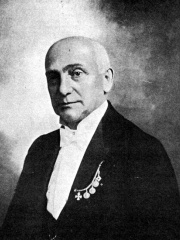
5. Enrico Cecchetti (1850 - 1928)
With an HPI of 60.09, Enrico Cecchetti is the 5th most famous Italian Dancer. His biography has been translated into 19 different languages.
Enrico Cecchetti (Italian pronunciation: [enˈriːko tʃekˈketti]; 21 June 1850 – 13 November 1928) was an Italian ballet dancer, mime, and founder of the Cecchetti method. The son of two dancers from Civitanova Marche, he was born in the costuming room of the Teatro Tordinona in Rome. After an illustrious career as a dancer in Europe, he went to dance for the Imperial Ballet in St. Petersburg, Russia, where he further honed his skills. Cecchetti was praised for his agility and strength in his performances, as well as his technical abilities in dance. By 1888, he was widely accepted as the greatest ballet virtuoso in the world. After an esteemed career in Russia, originating such roles as both the Bluebird and Carabosse in Petipa's masterpiece, The Sleeping Beauty, he turned to teaching. Some of his students included other notable dancers of the Imperial Ballet, such as: Anna Pavlova, Léonide Massine, and Vaslav Nijinsky. While in London in 1920, he provided instruction to the American ballerina Ruth Page and to Ninette de Valois. He also restaged many ballets, including Petipa's definitive version of Coppélia in 1894, from which nearly all modern versions of the work are based. (This version was notated in the early 20th century, and is today part of the Sergeyev Collection). While teaching a class, Cecchetti collapsed and he died the following day, 13 November 1928. Changes to the choreography of the male variations featured in the works of the Imperial Ballet's repertory. In 1890, Cecchetti performed in the ground-breaking production of The Sleeping Beauty, where his performance as the Bluebird caused a sensation in the audience at the Mariinsky Theatre. The choreography of the Bluebird has challenged male dancers even to the present day. Cecchetti left the Imperial ballet in 1902 to accept the directorship of the Imperial Ballet School in Warsaw, Poland, then part of the Russian Empire. His farewell gala at the Mariinsky Theatre featured all of the leading ballerinas of the day, many of whom were his students. In order to have everyone pay him homage, the Paquita Grand pas classique was performed, with the inclusion of the favorite solos of all of the participating ballerinas. This led to the tradition of including a long suite of variations for several ballerinas. In 1919 Cecchetti performed at the inaugural performance of the ballet, La Boutique fantasque, in London, appearing in the role of the shopkeeper.

6. Carla Fracci (1936 - 2021)
With an HPI of 59.29, Carla Fracci is the 6th most famous Italian Dancer. Her biography has been translated into 21 different languages.
Carolina "Carla" Fracci (Italian: [ˈkarla ˈfrattʃi]; 20 August 1936 – 27 May 2021) was an Italian prima ballerina, actress and ballet director. Considered one of the greatest ballerinas of the 20th century, she was a leading dancer of La Scala Theatre Ballet in Milan, then worked freelance with international companies including the Royal Ballet, London, Stuttgart Ballet, Royal Swedish Ballet and American Ballet Theatre. Fracci is known for her interpretation of leading characters in several Romantic ballets, such as La Sylphide, Giselle, Swan Lake, and Romeo and Juliet. She also performed in ballets such as Nijinsky and Complete Bell Telephone Hour Performances: Erik Bruhn 1961–1967. She danced with partners including Erik Bruhn, Rudolf Nureyev and Mikhail Baryshnikov. Later, she directed several ballet companies in Italy, including the Teatro San Carlo in Naples and the Teatro dell'Opera di Roma in Rome. According to Bruhn, she "gave the world a new idea of the ballerina in 19th-century Romantic ballets". She appeared with many of the leading companies of the world, and received multiple honours for her performances.

7. Alessandra Ferri (b. 1963)
With an HPI of 50.40, Alessandra Ferri is the 7th most famous Italian Dancer. Her biography has been translated into 14 different languages.
Alessandra Ferri OMRI (born 6 May 1963) is an Italian prima ballerina. She danced with the Royal Ballet (1980–1984), American Ballet Theatre (1985–2007) and La Scala Theatre Ballet (1992–2007) and as an international guest artist, before temporally retiring on 10 August 2007, aged 44, then returning in 2013. She has been referred to by some publications as a prima ballerina assoluta.

8. Ileana Citaristi (b. 1968)
With an HPI of 35.74, Ileana Citaristi is the 8th most famous Italian Dancer. Her biography has been translated into 16 different languages.
Ileana Citaristi is an Italian Odissi and Chhau dancer, and dance instructor based in Bhubaneswar, India. She was awarded the 43rd National Film Awards for Best Choreography for Yugant in 1995 and became, in 2006, the first dancer of foreign origin to be conferred the Padma Shri for her contributions to Odissi.
People
Pantheon has 8 people classified as Italian dancers born between 1729 and 1968. Of these 8, 2 (25.00%) of them are still alive today. The most famous living Italian dancers include Alessandra Ferri, and Ileana Citaristi. The most famous deceased Italian dancers include Carlo Blasis, Filippo Taglioni, and Pierina Legnani. As of April 2024, 2 new Italian dancers have been added to Pantheon including Alessandra Ferri, and Ileana Citaristi.
Living Italian Dancers
Go to all RankingsDeceased Italian Dancers
Go to all RankingsCarlo Blasis
1797 - 1878
HPI: 65.81
Filippo Taglioni
1777 - 1871
HPI: 63.37
Pierina Legnani
1863 - 1930
HPI: 61.23
Gaétan Vestris
1729 - 1808
HPI: 61.20
Enrico Cecchetti
1850 - 1928
HPI: 60.09
Carla Fracci
1936 - 2021
HPI: 59.29
Newly Added Italian Dancers (2025)
Go to all RankingsOverlapping Lives
Which Dancers were alive at the same time? This visualization shows the lifespans of the 6 most globally memorable Dancers since 1700.

